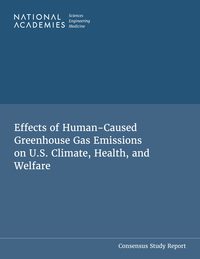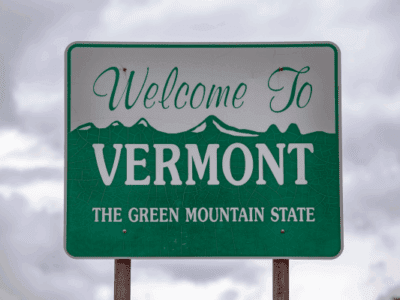The Presidency Under Siege
The current Justices are no friends of presidential power.
As recent scholarship has shown, the Supreme Court has been increasingly aggressive in countering exercises of presidential power. From the environmental perspective, West Virginia v. EPA is the most relevant example of the Court’s efforts to cut the presidency down to size. True, the Court purported to be chastising EPA, part of the bureaucracy. Yet everyone. including the Justices, knew that the EPA was implementing presidential policy under the close supervision of the White House. This being President’s Day, a few thoughts about that the Court’s ruling seem to be in order.
I should begin by saying that I don’t view the result of the case as outrageous. Obama’s Clean Power Plan was based on section 111(d) of the Clean Power Plan. The Court called that provision obscure. I can’t contest that view. Here’s an embarrassing confession: Though I had taught environmental law for 25 years at that point, I had never heard of section 111(d) until it was discussed as possible tool to limit carbon emissions. And apparently for good reason, since it had rarely been used and only in relatively insignificant cases. Based on a broad interpretation of a single word (“system”) in this fairly obscure provision, EPA proposed regulations quite different than the normal fare under the statute.
None of this proves that EPA was wrong. I would have voted to uphold the regulation as a reasonable if not necessary way to accomplish the statute’s purpose. It’s not hard to see, however, why some judges would think EPA was stretching the statute further than its language would really support.
The Court’s ruling has been harshly criticized, particularly because it was based on an extremely subjective standard — the Court’s view that the regulation raised “issues of vast economic and political significance.” Rather than repeat those criticising, I’d like to emphasize three other aspects of the Court’s opinion that I find highly problematic.
First, the Court’s description of the case was highly unfair. The Court depicted the regulations in question as radical. It failed to mention that they imposed relatively moderate costs on industry in exchange for much larger benefits, included substantial improvements to public health. In fact, the Court never mentioned the benefits of the regulation at all. It also failed to acknowledge the agency’s point that the tool it was using — shifting power generation from power plant to others — was commonly used by the industry and by many states to control emissions.
Moreover, the Court’s biggest objection to the statute seemed to be that it forced the industry to use less coal, without noting that EPA was merely accelerating a process that was already under way. The Court also failed to mention the dilemma that the agency thought it faced: It was charged — by the Supreme Court in an earlier case no less — with regulating carbon emissions, yet the standard regulatory tools seemed likely to produce only token results for an industry responsible for much of the problem.
It’s easy to make an action look radical if you only consider the way it is characterized by its opponents, which is what the Court did. That’s fair game in politics, but we should expect better of judges.
Second, while Justice Kagan accused the Court of giving up on a specific form of statutory interpretation (“textualism”), in another sense the Court had given up on interpreting the statute at all. The Court referred to the case as raising a “major question,” but it’s hard to phrase exactly what question of statutory interpretation it was answering.
We still don’t know what meaning the Court is attaching. to the. key term, “system.” For example, it seems quite possible that EPA would be able to write a regulation exactly like this one, if it were for a minor pollutant of no great economic significance. Even in the case of carbon emissions, the Court never explained what language in the statute it was interpreting, or what specific features of the regulation fell outside the statutory grant of authority.
All we really know is that, whatever section 111(d) means, this particular regulation goes too far. But “goes too far” isn’t much of a legal standard, and even less so if judges begin with a completely one-sided description of what an agency — and its President — have actually done.
We won’t really know the implications of the Court’s ruling until it has been interpreted by future cases. The Court’s opinion could be read narrowly by emphasizing some of the factors the Court discussed — the obscurity of the statute, the unprecedented nature of the agency’s action, and apparent congressional rejection of similar regulations. It remains to be seen whether the Court will adopt this narrow reading or simply strike down regulations that offend its conservative instincts.
What we do know right now is that the Court’s ruling will inhibit strong implementation of a president’s domestic policy agenda. In a world where society seems continually subject to new challenges, an insistence that the Presidents and their administrators stick to well-trodden paths may be a recipe for failure.
Reader Comments
2 Replies to “The Presidency Under Siege”
Comments are closed.







The Presidency has been accumulating too much power for decades. Turning the tide will be rough and difficult but the legislative bodies have conceded too much over the years. They’ve used it as an excuse to avoid responsibility. We’ll now see what happens given the removal of abortion rights–that may put legislators on the hot seat and the electorate may pay attention.
Re major questions doctrine.Even those critical of it don’t discuss the following. Why would it not be the role of Congress, if it opposed what a regulatory agency was proposing or doing, to intervene with legislation to stop the agency?
The President and Congress are the electeds, not SCOTUS.To pose an inherently obscure standard as a basis for ruling on constitutionality of an agency’s action seems an undisguised power grab by SCOTUS. We had to wait 230 years for Robers and the boys to “discover” this new doctrine ? This court is rogue.